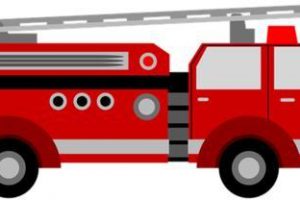Introduction
As our loved ones age, ensuring their safety becomes a paramount concern, particularly when they choose to live independently. Elderly individuals living alone face unique challenges that require careful attention and proactive measures. From preventing falls and accidents to addressing medical emergencies and social isolation, comprehensive home safety measures are essential for promoting the well-being and security of our older family members. In this comprehensive guide, we will delve into the key aspects of caring for and protecting elderly individuals living alone, providing practical insights, tips, and strategies to ensure their safety and comfort.
Understanding the Challenges Faced by Elderly Individuals Living Alone
Physical Limitations and Health Concerns
Aging often brings physical limitations, making daily tasks more challenging. Issues such as diminished mobility, weakened vision, and hearing loss can increase the risk of accidents and injuries for elderly individuals living alone. Moreover, chronic health conditions may require regular monitoring and management, necessitating a comprehensive approach to ensure their safety and well-being.
Cognitive Decline and Memory Impairment
For some elderly individuals, cognitive decline and memory impairment can pose significant safety risks. Conditions such as dementia or Alzheimer’s disease may lead to confusion, forgetfulness, and an increased likelihood of wandering, necessitating specific safety measures and constant supervision to prevent accidents and incidents.
Social Isolation and Loneliness
Living alone can lead to social isolation and feelings of loneliness, which can have detrimental effects on an elderly individual’s mental and emotional well-being. Social interaction and engagement play a crucial role in maintaining cognitive function and emotional health, highlighting the importance of fostering a supportive and connected environment for older family members.
Creating a Safe and Accessible Living Environment
Home Safety Modifications
Implementing home safety modifications can significantly reduce the risk of accidents and injuries for elderly individuals living alone. Some key modifications include installing grab bars in bathrooms, ensuring adequate lighting in hallways and staircases, removing tripping hazards, and using non-slip mats to prevent falls. Additionally, consider installing a medical alert system to provide immediate assistance in case of emergencies.
Adaptive Equipment and Assistive Devices
Equipping the living environment with adaptive equipment and assistive devices tailored to the specific needs of elderly individuals can enhance their independence and safety. Items such as mobility aids, hearing amplifiers, and medication organizers can promote self-sufficiency and facilitate daily activities, empowering older family members to maintain their autonomy and quality of life.
Medication Management
Proper medication management is crucial for elderly individuals with multiple prescriptions. Organizing medications, setting reminders, and ensuring adherence to prescribed dosages can prevent medication errors and complications. Consider utilizing pill organizers, medication reminder apps, or enlisting the help of a caregiver or healthcare professional to manage and monitor medication intake effectively.
Preventing Falls and Accidents
Physical Exercise and Fall Prevention Strategies
Encouraging regular physical exercise and implementing fall prevention strategies can significantly reduce the risk of falls for elderly individuals. Engaging in strength and balance exercises, maintaining a clutter-free living space, and wearing appropriate footwear are essential measures to prevent accidents and promote overall physical well-being.
Regular Home Safety Inspections
Conducting regular home safety inspections allows for the identification of potential hazards and risks within the living environment. Addressing issues such as loose rugs, uneven flooring, and inadequate lighting can mitigate the risk of falls and accidents, creating a safer and more secure home environment for elderly family members.
Bathroom Safety Measures
The bathroom is a high-risk area for slips and falls, especially for elderly individuals. Installing grab bars, non-slip mats, and raised toilet seats, and ensuring adequate lighting can significantly enhance bathroom safety and accessibility, reducing the likelihood of accidents and injuries.
Addressing Medical Emergencies and Health Concerns
Establishing a Comprehensive Health Management Plan
Developing a comprehensive health management plan in collaboration with healthcare professionals can ensure that the medical needs of elderly individuals living alone are adequately addressed. Regular health assessments, scheduled medical appointments, and clear communication with healthcare providers are essential for monitoring and managing chronic health conditions effectively.
Emergency Preparedness
Prepare for medical emergencies by creating an emergency plan that includes a list of emergency contacts, relevant medical information, and instructions for responding to various health-related crises. Ensure that older family members are familiar with the emergency plan and have easy access to essential medical supplies and contact information.
Engaging Caregiver Support
Incorporating caregiver support, either through professional caregivers or family members, can provide additional assistance and supervision for elderly individuals with complex medical needs. Caregivers can offer companionship, assistance with daily tasks, and crucial support during medical emergencies, promoting the overall well-being and safety of older family members.
Promoting Social Connection and Emotional Well-Being
Encouraging Social Activities and Engagement
Encourage elderly individuals to participate in social activities and engage with their community to combat social isolation and loneliness. Enrolling in community programs, attending social events, and fostering connections with peers can provide a sense of belonging and emotional support, contributing to a healthier and more fulfilling lifestyle.
Facilitating Communication and Emotional Support
Maintain open lines of communication with elderly family members to foster emotional support and understanding. Actively listen to their concerns, provide reassurance, and offer guidance when needed. Creating a supportive and empathetic environment can help alleviate feelings of loneliness and enhance overall emotional well-being.
Leveraging Technology for Connectivity
Integrate technology into the daily lives of elderly individuals to facilitate communication and connectivity with family, friends, and caregivers. Utilize video calling, social media platforms, and virtual support groups to promote regular interaction and engagement, ensuring that older family members remain connected and engaged with their social network.
Financial and Legal Planning
Establishing Financial Security Measures
Assist elderly family members in establishing financial security measures, such as setting up automatic bill payments, organizing financial documents, and creating a budget plan. Regularly review financial matters and provide guidance on managing expenses to ensure financial stability and security.
Creating a Comprehensive Estate Plan
Collaborate with legal professionals to create a comprehensive estate plan that outlines the distribution of assets, healthcare directives, and power of attorney arrangements. Establishing a clear and legally binding estate plan can provide peace of mind for both elderly individuals and their family members, ensuring that their wishes are respected and their affairs are appropriately managed.
Monitoring for Signs of Financial Exploitation
Stay vigilant for signs of financial exploitation or fraud that may target elderly individuals. Educate older family members about common scams, encourage them to be cautious with personal information, and regularly monitor their financial transactions to prevent potential exploitation and safeguard their financial well-being.
Conclusion
Caring for and protecting elderly family members living alone requires a comprehensive and proactive approach that addresses their unique needs and challenges. By creating a safe and accessible living environment, preventing falls and accidents, addressing medical emergencies and health concerns, promoting social connection and emotional well-being, and establishing sound financial and legal planning, we can ensure the safety, comfort, and overall well-being of our older loved ones. It is essential to foster a supportive and nurturing environment that empowers elderly individuals to maintain their independence and quality of life while receiving the necessary assistance and care to navigate the challenges associated with aging. Embrace these strategies and insights to provide the best possible care and protection for your elderly family members, ensuring that they can enjoy a safe, secure, and fulfilling living experience as they age in place.











Add Comment